Boyi Wei
On Evaluating the Durability of Safeguards for Open-Weight LLMs
Dec 10, 2024Abstract:Stakeholders -- from model developers to policymakers -- seek to minimize the dual-use risks of large language models (LLMs). An open challenge to this goal is whether technical safeguards can impede the misuse of LLMs, even when models are customizable via fine-tuning or when model weights are fully open. In response, several recent studies have proposed methods to produce durable LLM safeguards for open-weight LLMs that can withstand adversarial modifications of the model's weights via fine-tuning. This holds the promise of raising adversaries' costs even under strong threat models where adversaries can directly fine-tune model weights. However, in this paper, we urge for more careful characterization of the limits of these approaches. Through several case studies, we demonstrate that even evaluating these defenses is exceedingly difficult and can easily mislead audiences into thinking that safeguards are more durable than they really are. We draw lessons from the evaluation pitfalls that we identify and suggest future research carefully cabin claims to more constrained, well-defined, and rigorously examined threat models, which can provide more useful and candid assessments to stakeholders.
An Adversarial Perspective on Machine Unlearning for AI Safety
Sep 26, 2024Abstract:Large language models are finetuned to refuse questions about hazardous knowledge, but these protections can often be bypassed. Unlearning methods aim at completely removing hazardous capabilities from models and make them inaccessible to adversaries. This work challenges the fundamental differences between unlearning and traditional safety post-training from an adversarial perspective. We demonstrate that existing jailbreak methods, previously reported as ineffective against unlearning, can be successful when applied carefully. Furthermore, we develop a variety of adaptive methods that recover most supposedly unlearned capabilities. For instance, we show that finetuning on 10 unrelated examples or removing specific directions in the activation space can recover most hazardous capabilities for models edited with RMU, a state-of-the-art unlearning method. Our findings challenge the robustness of current unlearning approaches and question their advantages over safety training.
Evaluating Copyright Takedown Methods for Language Models
Jun 26, 2024Abstract:Language models (LMs) derive their capabilities from extensive training on diverse data, including potentially copyrighted material. These models can memorize and generate content similar to their training data, posing potential concerns. Therefore, model creators are motivated to develop mitigation methods that prevent generating protected content. We term this procedure as copyright takedowns for LMs, noting the conceptual similarity to (but legal distinction from) the DMCA takedown This paper introduces the first evaluation of the feasibility and side effects of copyright takedowns for LMs. We propose CoTaEval, an evaluation framework to assess the effectiveness of copyright takedown methods, the impact on the model's ability to retain uncopyrightable factual knowledge from the training data whose recitation is embargoed, and how well the model maintains its general utility and efficiency. We examine several strategies, including adding system prompts, decoding-time filtering interventions, and unlearning approaches. Our findings indicate that no tested method excels across all metrics, showing significant room for research in this unique problem setting and indicating potential unresolved challenges for live policy proposals.
SORRY-Bench: Systematically Evaluating Large Language Model Safety Refusal Behaviors
Jun 20, 2024



Abstract:Evaluating aligned large language models' (LLMs) ability to recognize and reject unsafe user requests is crucial for safe, policy-compliant deployments. Existing evaluation efforts, however, face three limitations that we address with SORRY-Bench, our proposed benchmark. First, existing methods often use coarse-grained taxonomies of unsafe topics, and are over-representing some fine-grained topics. For example, among the ten existing datasets that we evaluated, tests for refusals of self-harm instructions are over 3x less represented than tests for fraudulent activities. SORRY-Bench improves on this by using a fine-grained taxonomy of 45 potentially unsafe topics, and 450 class-balanced unsafe instructions, compiled through human-in-the-loop methods. Second, linguistic characteristics and formatting of prompts are often overlooked, like different languages, dialects, and more -- which are only implicitly considered in many evaluations. We supplement SORRY-Bench with 20 diverse linguistic augmentations to systematically examine these effects. Third, existing evaluations rely on large LLMs (e.g., GPT-4) for evaluation, which can be computationally expensive. We investigate design choices for creating a fast, accurate automated safety evaluator. By collecting 7K+ human annotations and conducting a meta-evaluation of diverse LLM-as-a-judge designs, we show that fine-tuned 7B LLMs can achieve accuracy comparable to GPT-4 scale LLMs, with lower computational cost. Putting these together, we evaluate over 40 proprietary and open-source LLMs on SORRY-Bench, analyzing their distinctive refusal behaviors. We hope our effort provides a building block for systematic evaluations of LLMs' safety refusal capabilities, in a balanced, granular, and efficient manner.
A Label-Free and Non-Monotonic Metric for Evaluating Denoising in Event Cameras
Jun 13, 2024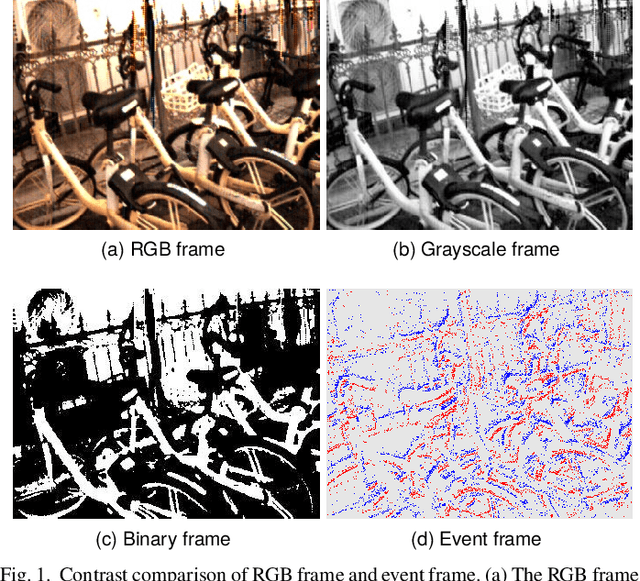
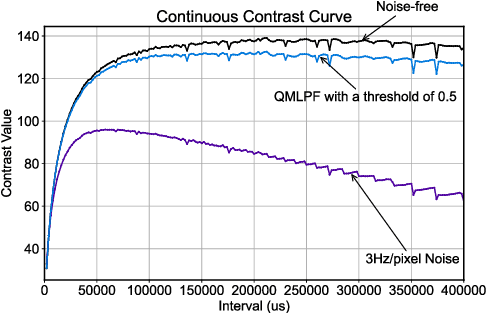

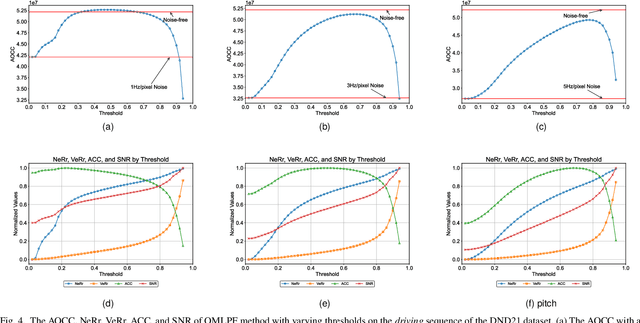
Abstract:Event cameras are renowned for their high efficiency due to outputting a sparse, asynchronous stream of events. However, they are plagued by noisy events, especially in low light conditions. Denoising is an essential task for event cameras, but evaluating denoising performance is challenging. Label-dependent denoising metrics involve artificially adding noise to clean sequences, complicating evaluations. Moreover, the majority of these metrics are monotonic, which can inflate scores by removing substantial noise and valid events. To overcome these limitations, we propose the first label-free and non-monotonic evaluation metric, the area of the continuous contrast curve (AOCC), which utilizes the area enclosed by event frame contrast curves across different time intervals. This metric is inspired by how events capture the edge contours of scenes or objects with high temporal resolution. An effective denoising method removes noise without eliminating these edge-contour events, thus preserving the contrast of event frames. Consequently, contrast across various time ranges serves as a metric to assess denoising effectiveness. As the time interval lengthens, the curve will initially rise and then fall. The proposed metric is validated through both theoretical and experimental evidence.
AI Risk Management Should Incorporate Both Safety and Security
May 29, 2024
Abstract:The exposure of security vulnerabilities in safety-aligned language models, e.g., susceptibility to adversarial attacks, has shed light on the intricate interplay between AI safety and AI security. Although the two disciplines now come together under the overarching goal of AI risk management, they have historically evolved separately, giving rise to differing perspectives. Therefore, in this paper, we advocate that stakeholders in AI risk management should be aware of the nuances, synergies, and interplay between safety and security, and unambiguously take into account the perspectives of both disciplines in order to devise mostly effective and holistic risk mitigation approaches. Unfortunately, this vision is often obfuscated, as the definitions of the basic concepts of "safety" and "security" themselves are often inconsistent and lack consensus across communities. With AI risk management being increasingly cross-disciplinary, this issue is particularly salient. In light of this conceptual challenge, we introduce a unified reference framework to clarify the differences and interplay between AI safety and AI security, aiming to facilitate a shared understanding and effective collaboration across communities.
Assessing the Brittleness of Safety Alignment via Pruning and Low-Rank Modifications
Feb 07, 2024



Abstract:Large language models (LLMs) show inherent brittleness in their safety mechanisms, as evidenced by their susceptibility to jailbreaking and even non-malicious fine-tuning. This study explores this brittleness of safety alignment by leveraging pruning and low-rank modifications. We develop methods to identify critical regions that are vital for safety guardrails, and that are disentangled from utility-relevant regions at both the neuron and rank levels. Surprisingly, the isolated regions we find are sparse, comprising about $3\%$ at the parameter level and $2.5\%$ at the rank level. Removing these regions compromises safety without significantly impacting utility, corroborating the inherent brittleness of the model's safety mechanisms. Moreover, we show that LLMs remain vulnerable to low-cost fine-tuning attacks even when modifications to the safety-critical regions are restricted. These findings underscore the urgent need for more robust safety strategies in LLMs.
IDO-VFI: Identifying Dynamics via Optical Flow Guidance for Video Frame Interpolation with Events
May 18, 2023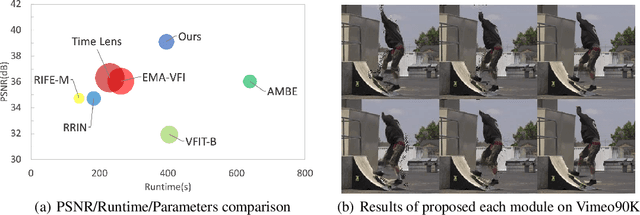
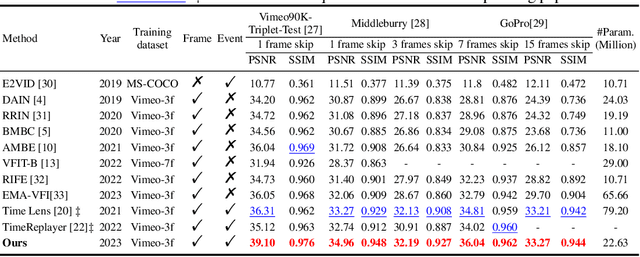
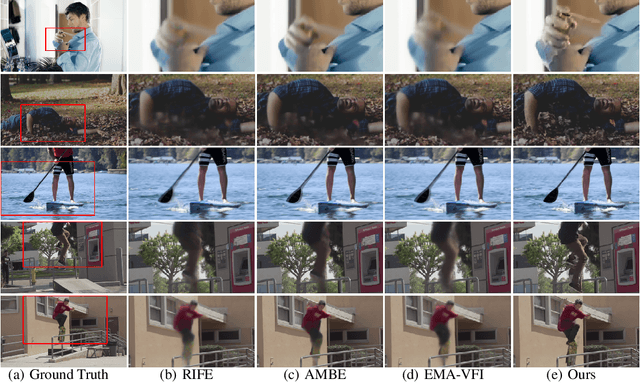
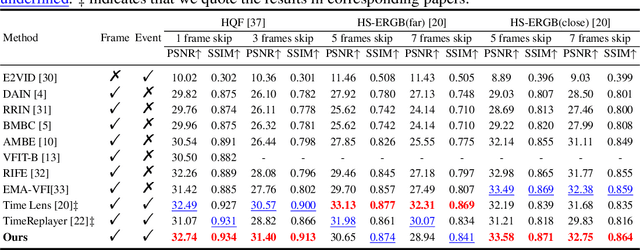
Abstract:Video frame interpolation aims to generate high-quality intermediate frames from boundary frames and increase frame rate. While existing linear, symmetric and nonlinear models are used to bridge the gap from the lack of inter-frame motion, they cannot reconstruct real motions. Event cameras, however, are ideal for capturing inter-frame dynamics with their extremely high temporal resolution. In this paper, we propose an event-and-frame-based video frame interpolation method named IDO-VFI that assigns varying amounts of computation for different sub-regions via optical flow guidance. The proposed method first estimates the optical flow based on frames and events, and then decides whether to further calculate the residual optical flow in those sub-regions via a Gumbel gating module according to the optical flow amplitude. Intermediate frames are eventually generated through a concise Transformer-based fusion network. Our proposed method maintains high-quality performance while reducing computation time and computational effort by 10% and 17% respectively on Vimeo90K datasets, compared with a unified process on the whole region. Moreover, our method outperforms state-of-the-art frame-only and frames-plus-events methods on multiple video frame interpolation benchmarks. Codes and models are available at https://github.com/shicy17/IDO-VFI.
Hardware Acceleration of Sampling Algorithms in Sample and Aggregate Graph Neural Networks
Sep 07, 2022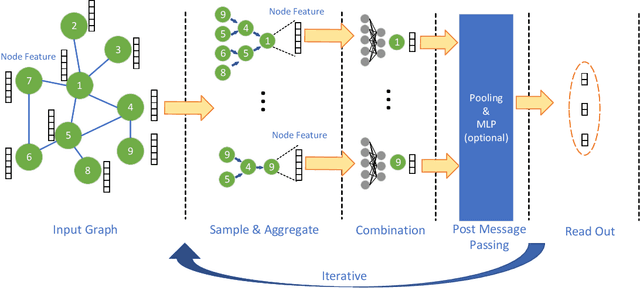
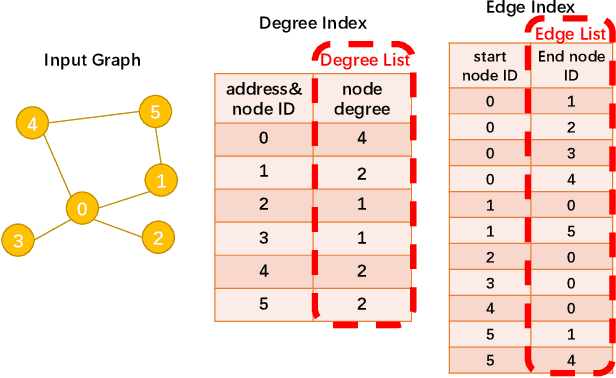
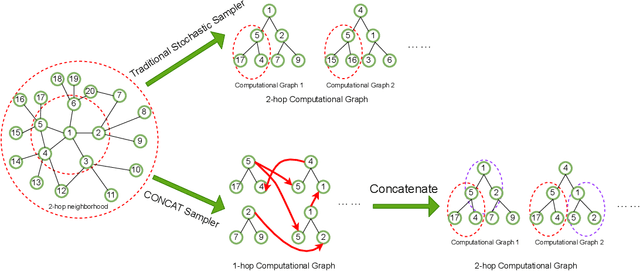

Abstract:Sampling is an important process in many GNN structures in order to train larger datasets with a smaller computational complexity. However, compared to other processes in GNN (such as aggregate, backward propagation), the sampling process still costs tremendous time, which limits the speed of training. To reduce the time of sampling, hardware acceleration is an ideal choice. However, state of the art GNN acceleration proposal did not specify how to accelerate the sampling process. What's more, directly accelerating traditional sampling algorithms will make the structure of the accelerator very complicated. In this work, we made two contributions: (1) Proposed a new neighbor sampler: CONCAT Sampler, which can be easily accelerated on hardware level while guaranteeing the test accuracy. (2) Designed a CONCAT-sampler-accelerator based on FPGA, with which the neighbor sampling process boosted to about 300-1000 times faster compared to the sampling process without it.
 Add to Chrome
Add to Chrome Add to Firefox
Add to Firefox Add to Edge
Add to Edge